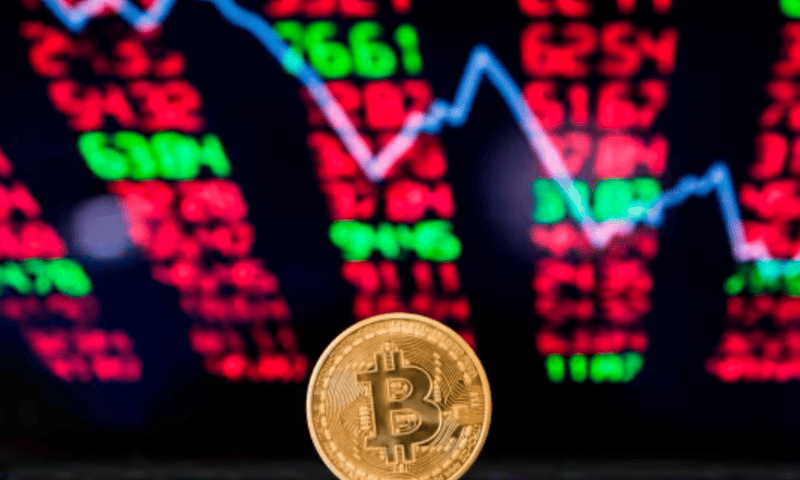Bitcoin is down 23% from an all-time high, but S&P 500 is on pace for another record close
The recent weakness of bitcoin could signal an imminent correction of the S&P 500 in the summer, as the two assets often trade in tandem, according to Barry Bannister, managing director and chief equity strategist at Stifel.
Bitcoin has been down six of the past seven days as of Monday. The largest crypto by market capitalization BTCUSD, 0.53% is down more than 23% from its all-time high of $73,798 set in March, while still up 33% so far this year, according to Dow Jones Market Data. Bitcoin saw a rolling one-month loss of 20.8% last Friday, the worst since the one-month period ending Nov. 28, 2022.
On the other hand, the S&P 500 SPX is on pace for a new record close. The index is also on pace for its fifth straight day of gains — its longest winning streak since Jan. 25, when it rose for six straight days, according to Dow Jones Market Data.
However, the often strong correlation between bitcoin and stocks in the past could point to “an imminent S&P 500 summer correction,” noted Bannister.
Since 2020, as the Federal Reserve injected liquidity into the market following the outbreak of the COVID-19 pandemic, crypto and stocks started to demonstrate a relatively strong correlation, though the correlation wavers from time to time.
While some crypto market participants have argued that the recent weakness in bitcoin was mostly due to idiosyncratic reasons, especially the repayment plan by bankrupt crypto exchange Mt. Gox, Bannister said bitcoin’s price is still mostly a reflection of macroeconomic situations.
“It’s the availability of cheap, fed liquidity that drives drives the price of bitcoin,” Bannister said in a phone interview. “Every single dovish pivot for the past 13 years has marked a sharp bitcoin increase, and bitcoin is a non interest bearing asset that thrives on lower interest rates and available liquidity.”
The largest crypto is a good measure of the speculative appetite and the shifts in Fed policies, as bitcoin trades 24 hours a day, seven days a week, with high volatility, Bannister said.
As bitcoin tumbled, Bannister is bearish on stocks, expecting the S&P 500 to see a correction soon. A correction usually refers to a market decline that is more than 10%, but less than 20%, from a recent high.
“The market would correct if the Fed doesn’t cut this year, we’ve reached the end of the line where the economy is not quite as strong and inflation sticky would simply be the worst possible outcome,” Bannister said.
While Fed fund futures traders are pricing in two rate cuts by the end of this, starting in September, Bannister is pessimistic. The core PCE number is likely to arrive stronger than expected in the late summer and early fall, which will render a rate cut in September unlikely, according to Bannister. The chance for a rate cut in December could also be remote as inflation may continue to be problematic, said Bannister.
Jonathan Krinsky, chief market technician, also highlighted the risks stocks might face, as bitcoin has fallen more than 25% since early June. “Bitcoin has been a good leading indicator for the Nasdaq-100 over the years,” Krinsky wrote in his Sunday note.

Will Rhind, founder and chief executive at investment firm GraniteShares, holds a different opinion. Hopeful of rate cuts this year, Rhind expects big-cap tech stocks to continue to drive the stock market rally through the year-end. Such stocks have strong fundamentals, while the potential rate cuts would likely boost their valuations, Rhind noted.
As tech stocks and bitcoin often trade in tandem, Rhind said he expects bitcoin to show strength by the end of the year, despite its recent weakness.
“We are in a risk-on market. There is no reason to believe that bitcoin will behave differently,” Rhind said.

